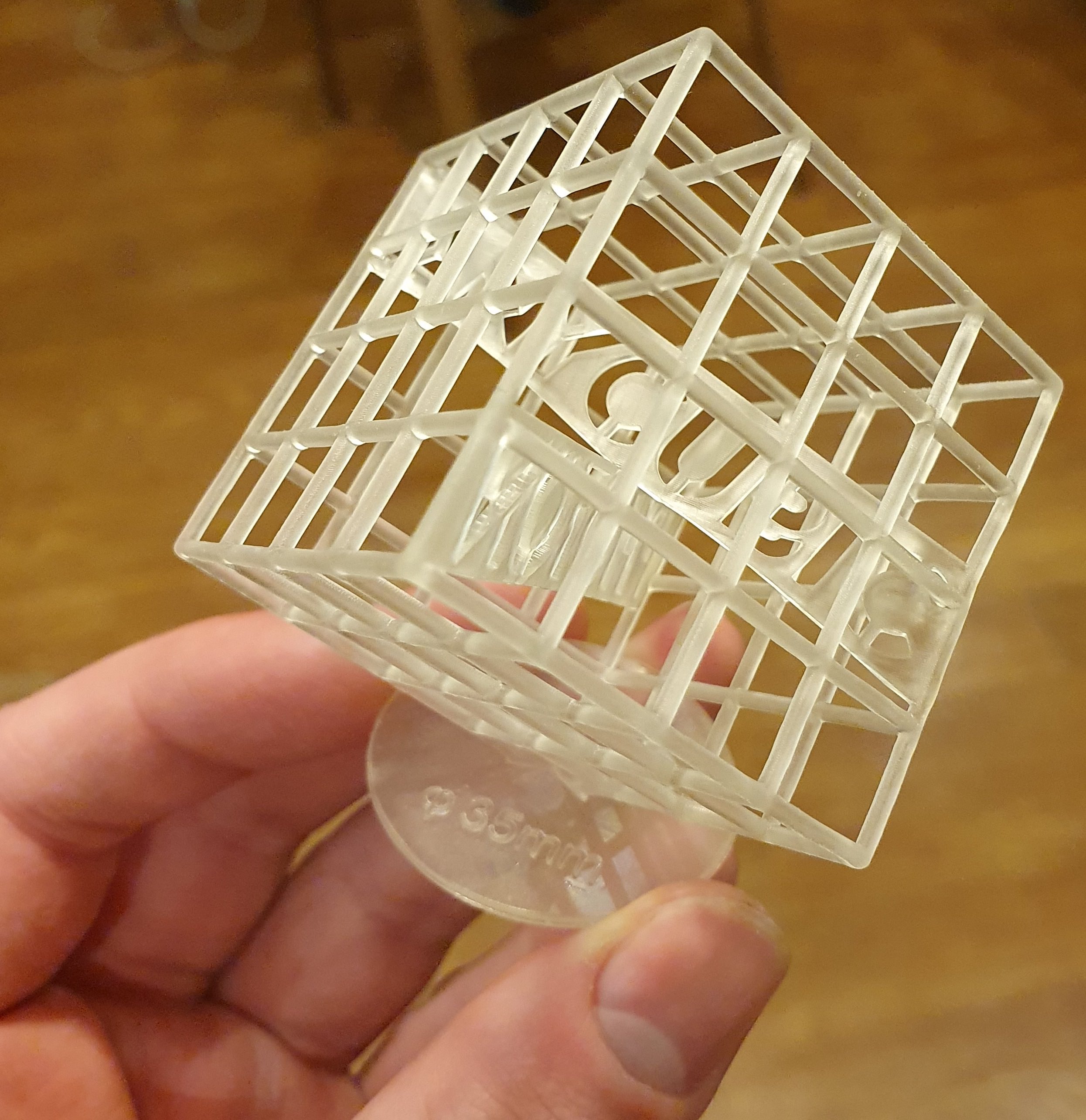What is stereolithographic (SLA) 3D printing?
SLA 3D printing is a type of 3D printing where solid 3D objects can be made from liquid resin by curing the liquid resin with specific frequencies of light. Monomers of resin are prompted to cross link and join to form solid rigid polymers when a reaction is initiated by light radiation. SLA 3D printing can achieve much more detailed resolutions compared to comparable low-cost 3D printing methods like Fused Filament Fabrication techniques.
A computer-controlled UV laser is used to ‘draw’ a pre-determined 2D shape in a vat of resin. Once this 2D layer has solidified it is moved down by a build platform. The solid 2D layer then has a liquid layer of resin deposited on it and the laser once again passes of this layer, solidifying it. This process is repeated until the desired 3D object is formed from many (sometimes thousands) of 2D layers. The diagram below shows a possible setup for SLA 3D printing.
Often SLA 3D printers print the objects ‘upside down’ so that less resin is needed in the vat i.e. only the volume of resin used is needed when printing ‘upside down’, whereas conventional printing would require an amount of resin equal to the height of the object – this is inefficient particularly with expensive resins.
Complex objects which would not be possible to manufacture using traditional techniques are able to be made as shown below.
What are photopolymers?
Photopolymers are the key to SLA 3D printing. The quality and properties of the 3D printed object all depend on the type of photopolymer used. The part will only be as good as the material properties. This means that it is vitally important that new photopolymers are developed and improved for SLA 3D printing to continue being a useful and growing technology.
Photopolymers are a mixture of liquid monomers, oligomers, and photo-initiators, which are activated and polymerised by specific frequencies of light. Most 3D printing resins are activated in the ultra-violet region of light.
Photopolymers are used for lots of different applications as hard enamels often used to coat objects. Photopolymers are even used in printing on artificial nails.
The polymerisation process occurs as a result of photo-initiators causing crosslinking between monomer and oligomer molecules forming a network of cross links. This results in a thermoset polymer. An advantage of using photopolymers in 3D printing is that they can be activated selectively making them suitable for an additive manufacturing process.
What photopolymers are used in SLA 3D printing?
In the past acrylates and methacrylates were often used. However, there are common problems with their volume shrinking when they are cured and solidify. This is a significant issue for 3D printing as it will lead to dimensional inaccuracy and could lead to failed prints if it prevents layers for adhering to one another correctly. As a result of this, recently epoxide resins are now often used since they have significantly less volume shrinkage.
Acrylic based photopolymers used in SLA 3D printing are often must more rigid and harder than equivalent materials used in fused filament fabrication (FFF) technology. This gives a distinct advantage over the weaker materials commonly used. SLA photopolymers also have higher melting temperatures than plastics like ABS and PLA (often used in FFF 3D printing) making them more suitable for a range of applications.
What is the future of photopolymers in 3D printing?
New photopolymers will be developed with a range of different properties making SLA 3D printing more versatile than it currently is. The main research is into finding photo-initiators which are able to turn existing thermosetting polymers into photopolymers suitable for 3D printing. With a wider range of materials, SLA 3D printing will become a more adopted and widespread technology. With the price of SLA 3D printing having come down significantly over the last 5 years i.e. you can now buy a desktop SLA 3D printer for around £100, it is necessary and inevitable that the next stage of development will be in improving and developing new materials.



